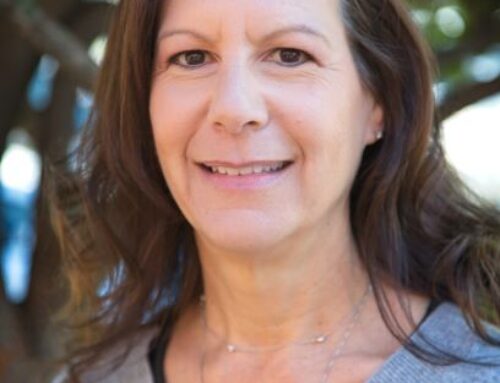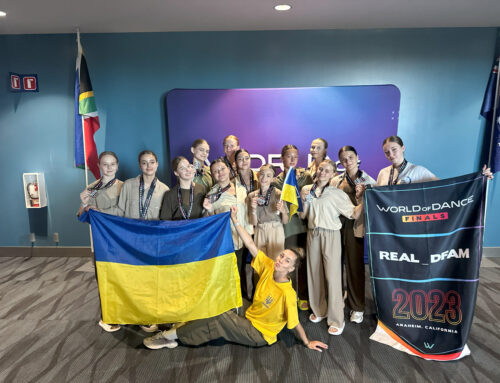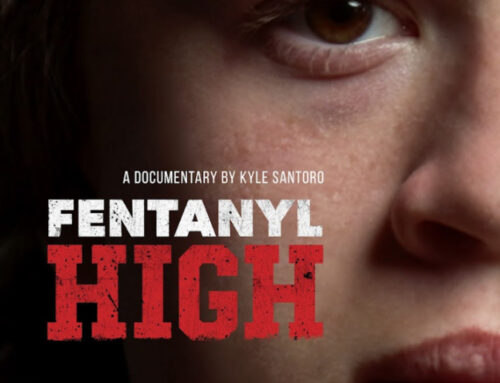Fair organizers want participating in science and engineering experiments to be a fun, rewarding learning experience.
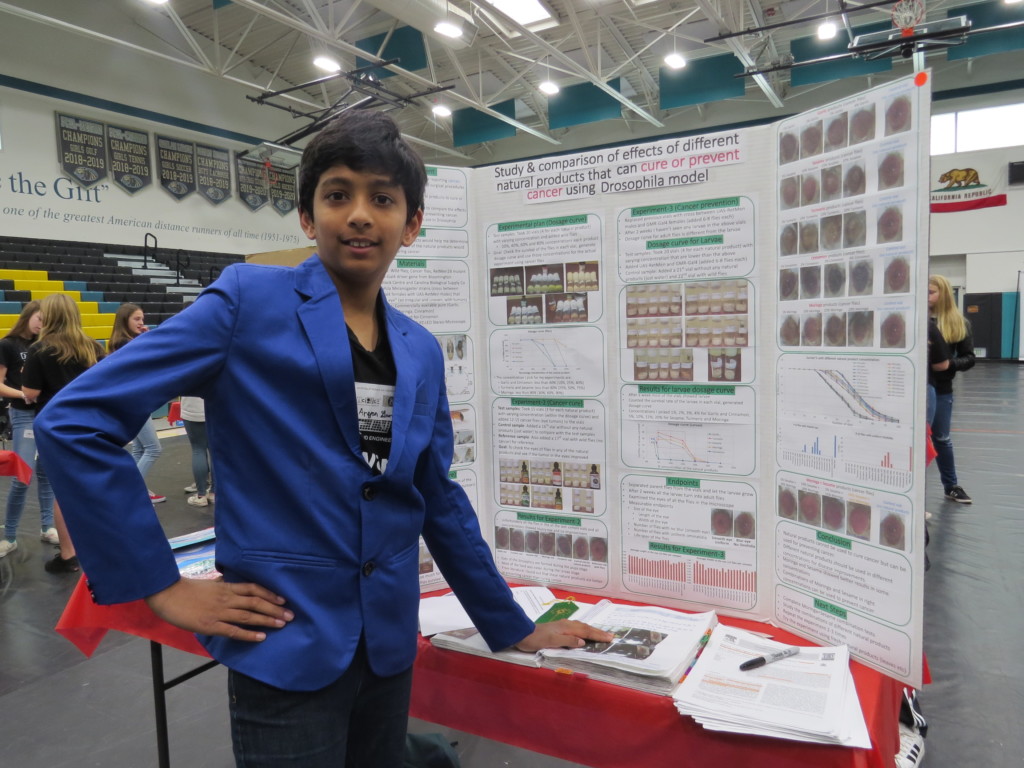
Photo by Marty Cheek
Solorsano 8th-grade student Aryan Ganesh displays his first-place project titled “Study and Comparison of Effects of Different Natural Products that Can Cure or Prevent Cancer Using Drosophila Model.” The fair was held at the Christopher High School gym in 2020
By Staff Report
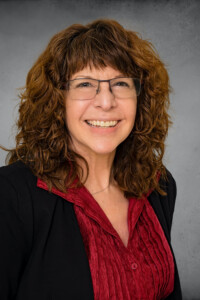
Susan Hines
The organizers of the South Valley Science and Engineering Fair want local students to have a fun, rewarding, learning experience by participating in the fair. The registration deadline to participate has been extended to Jan. 15.
SVSEF is a safe, inclusive, juried STEM (science, technology, engineering, and math) competition for all 5th-8th graders living and/or going to school in Morgan Hill, Gilroy, and San Martin. It will take place Feb. 9, at the Live Oak High School gym, with student check-in the evening prior. At 6 p.m. the fair will opened to the public, so families, friends, and the public can view exhibits and watch the award ceremony.
Morgan Hill Life asked the SVSEF’s director Susan Hines about the educational event and why she encourages middle school students to participate.
- What kind of science/engineering exhibits will be allowed in the fair and how is the judging done?
SVSEF has two types of exhibits: science experiments (in the fields of biology, chemistry, and physics) and investigations (in the areas of engineering, math, and computer science.)
Judging is done per ISEF (International Science and Engineering ) guidelines. All of our judges are degreed in the subject area they are judging. They are experts in their fields. We use a rubric that is available to the students beforehand, so they know what the judges are looking for. SVSEF is a learning focused fair. So while we do award cash prizes for 1st, 2nd, and 3rd place in each category and grade range, and are a feeder fair to the county competition, the Synopsys Championship, we are focused on supporting students at the level they are at, fostering their critical thinking skills, curiosity, and self -confidence, and encouraging the ethical practice of the scientific method in a respectful, gentle manner.
We are not trying to “trip them up.” Instead, we want to guide them into making informed decisions that are supported by the work they have accomplished.
- How do students participate in the fair?
First thing, students need to decide whether they want to work alone or with one partner. Then they go to the South Valley Science and Engineering Initiative’s (SVSEI’s) website, www.southvalleyscience.org, and look at our STEM fair FAQs.

Already have a project idea? Check that it’s not on the Unacceptable Projects list: those that pose ethics issues, don’t have a goal or endpoint, or are what the county fair considers to be poor projects, so they would be unworthy of the student’s time.
Look at the project types pages and examples, do a quick literature search to obtain two references pertinent to your project, then go to the top of the SVSEI homepage to register.
Fill out the registration form as well as you can – and then wait. One of our SRC (science and safety committee) reviewers will get back to you within a few days with either an “Approved” or “Pending,” which means it needs some clarification. If it’s the latter, our reviewer will offer suggestions to make your project compliant.
Go back into your project entry link, make your changes, and wait for your “Approved” mail.
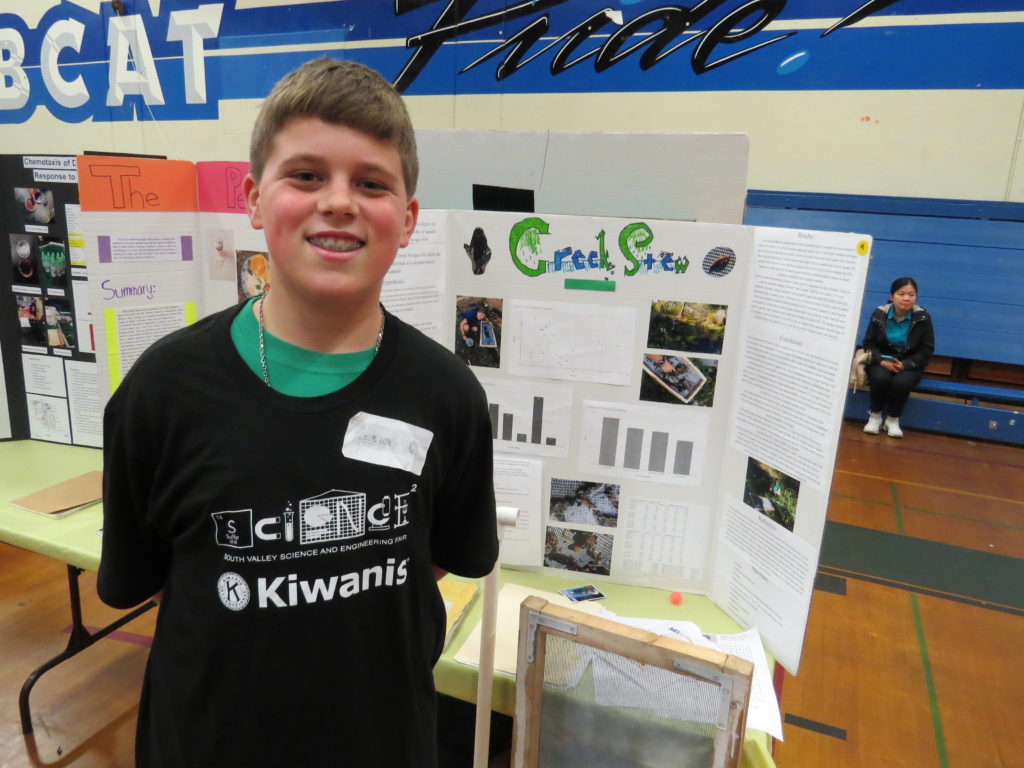
A science fair participant from a previous event. Photo by Marty Cheek
Then start your project, making sure you write everything you’ve done in your SVSEI provided bound project journal. SVSEI will be having mentoring/work days at one of Morgan Hill’s high tech companies in January, where you can do your project if it’s either unsafe to do at home (SRC will let you know this) or you just need some help.
We’ll also have the project boards available for pickup. SVSEI is asking that you register for this, so we have enough mentors and plan for enough space.
SVSEI will also be scheduling a work day late January/early February to get help on preparing your project display board. If students need project help at any time during this process, they shouldn’t hesitate to use the website contact page to ask us for assistance.
After school on Feb. 8 will be student check in at the Live Oak High School Gym. Students will sign in, drop off their boards, and pick up their SVSEF T-shirts that they’ll wear during the next day’s judging and award ceremony.
On Feb. 9, the judges will come in early to preview the project boards. Judging will start when the students arrive after school. Expect questions like “Tell me about your project,” “How did you do your experiment or investigation,” “What did you learn?” and “What would you do differently or if you continued this project?”
After judging, the students will be able to look at others’ projects and vole for the People’s Choice awards for their grade level. SVSEI will provide a light dinner while the judges are caucusing.
The doors will open for the public at 6 p.m., with the awards ceremony starting at 6:15 p.m.. We plan to be done around 7 p.m.
- Why is it important for young people in middle school to participate in the fair?
In addition to just being fun, doing a STEM project is one of the most authentic “real world” work that our local students can do. Why do I say that? Because in choosing a question or problem that interests them, students use their critical thinking skills to analyze the situation, create solutions, meet deadlines, explain their projects to experts in their fields, and are rewarded for their efforts. Additionally, being an SVSEF participant, either individually or in a team of two, means getting to see and be “wowed” by the work done by both friends and students from other schools.
- Why might you encourage parents and also science teachers in local schools to encourage their students to get involved in the science fair?

Photo by Marty Cheek
Category judge Karen Gundy-Burlet talks to a South Valley Science and Engineering Fair about his project.
As a parent and/or science teacher, we want what is best for our students. We want them to stay curious and be discoverers of the world around them. We want them to become independent thinkers, lifelong learners, adaptable, self-dependent, self-aware, aware of and respectful of others and their environment (locally and globally), be fair, and be ethical.
We want our students to be educated — and doing a science and engineering fair project is in alignment with Next Generation Science Standards and the state science standards. It “ticks” many of the “boxes” in the three curricular areas of disciplinary core ideas, crosscutting concepts, and science and engineering practices.
Students who participate in self-selected and guided projects — and, after all, that’s what a science and engineering fair is a compilation of — can learn to fail with grace if their first approach doesn’t work, pick themselves up figuratively, then persevere, gain a sense of accomplishment that is well earned, learn to present their work confidently to experts, and become one themselves, since who knows your own work better than you?
Parents and teachers want their students to know they can do something challenging – and be successful. So whether their student goes home with a prize or not, each one is a winner.
Each student in a science and engineering fair has practiced the scientific method, honed critical thinking, math, and language skills, been creative, learned from others (experts and peers), experienced the camaraderie of discovering science and engineering through hands- and minds-on projects, and most importantly, had fun learning. That’s definitely something the adults in a child’s life want to encourage.
- Why might it be important for young folks to be introduced to the fun of science at an early age — through a science fair competition?
As young children, we’re very curious. Children want to know how the world works, to figure things out, including their place in it. Doing a science and engineering project is the opposite of a “cookbook lab.” We don’t know exactly how things will turn out, so we need to be observant, adaptable, analytical, and utilize out of the box thinking.
A good project raises more questions than answers. It’s opened ended. Being a science fair participant or alumni reinvigorates that sense of curiosity and discovery we had as young children, as well as knowing we have the versatility to cope with change and uncertainty, which is so important in the technologically challenging world we live in.



